I bought my first Chemex Coffee maker in the 1970’s – and the design has not changed since then. They have added a few new designs, but all are classics that make great coffee.
It was from this pour through delicious coffee that changed how the world made coffee. Growing up coffee was made with either a percolator or cowboy coffee (where coffee grounds were added directly to boiling water – steeped and strained). Once people discovered how delicious this drip method provided some decided to mechanize it– leading to “Mr. Coffee.” Mr. Coffee was simply an emulation of the drip method, and from there many new machines came into being. But the classic, is the Chemex.
History
Peter Schlumbohm was a Ph.D. chemist who designed this based on an Erlenmeyer flask with a funnel on top.
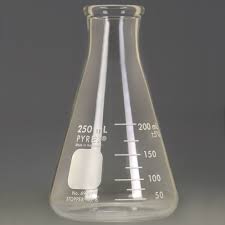
Only a chemist would look at a flask and think — I can make coffee with that. When I was doing organic chemistry lab, I made coffee using this – and later purchased my own chemex. Those were the days when you could make food in organic chemistry lab – I gather that has changed.
The design for the coffee maker worked to not only make great coffee, but it is beautiful as well. They are their own pieces of art, which is unlike most coffee makers that have pure function. It is said that “Mr Coffee” that brought the revolution of drip coffee makers had his idea from the drip Chemex. These are the only coffee makers designated by the Illinois Institute of Technology as a “best-designed” item, and they are also exhibits in the Museum of Modern Art in New York.
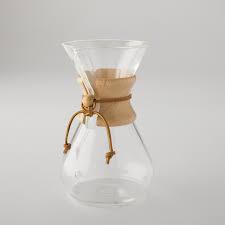
The original Chemex, and the one I originally purchased. The wood collar provides great insulation as well as art.
Making Great Coffee
80 grams of coffee beans – these should be ground to a medium grind – not course, and not espresso. I find that 400 microns is too course. 1000 grams of water total (yes, I weigh the entire process on a scale).
Preparation.
The filter is placed into the chemex and then wetted using some hot water- that also serves to charge the vessel and get it warmer. The filter is a cone shape, with three layers. The water serves both to remove some of the taste of the filter, but to add some heat to the vessel. Once you have wetted the filter paper then pour out the water from the coffee maker – keeping the filter sealed against the wall of the vessel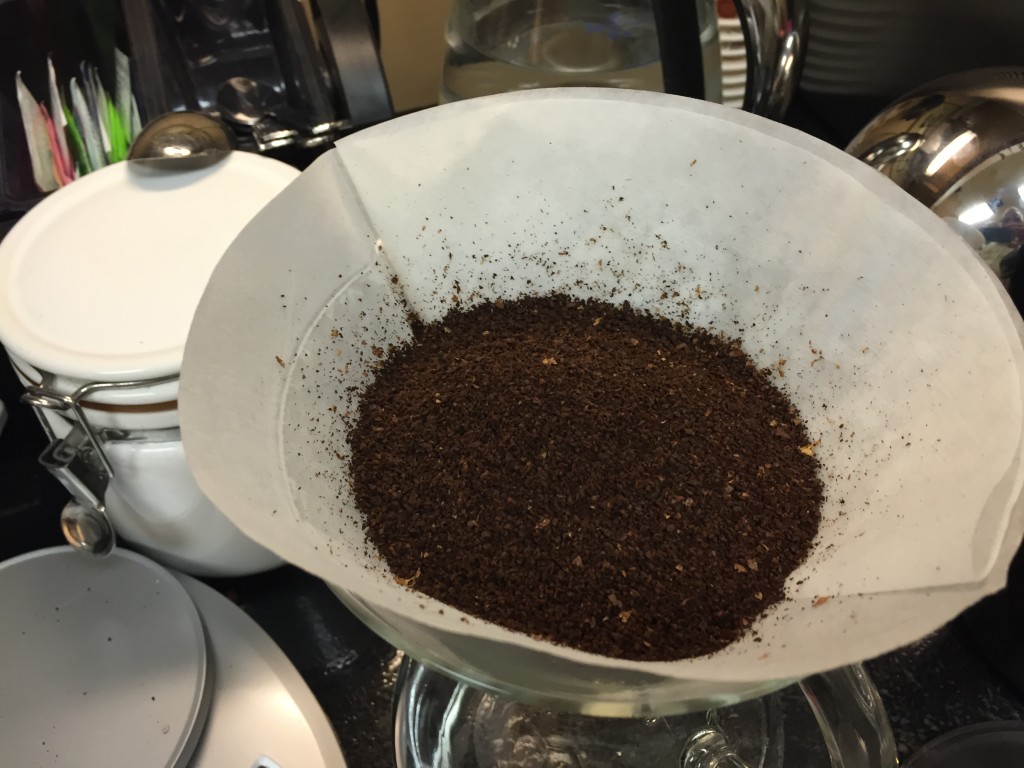
Step 1:
For precision -place the wetted filter and chemex on a scale and zero (tare) it.
Add the ground beans into the filter. Should be 80 grams of beans. Zero this again.
Step 2
Take the hot water (194 degrees works for me, but like with the Aeropress, any temperature between 180 and 200 I have used, below 180 and there is less extraction, above 200 and too much extraction and burning of the coffee with bitterness).
Wet the grounds with 250 grams of hot water. This will begin the extraction process. Allow all this water to go through until the grounds look like a caldera.
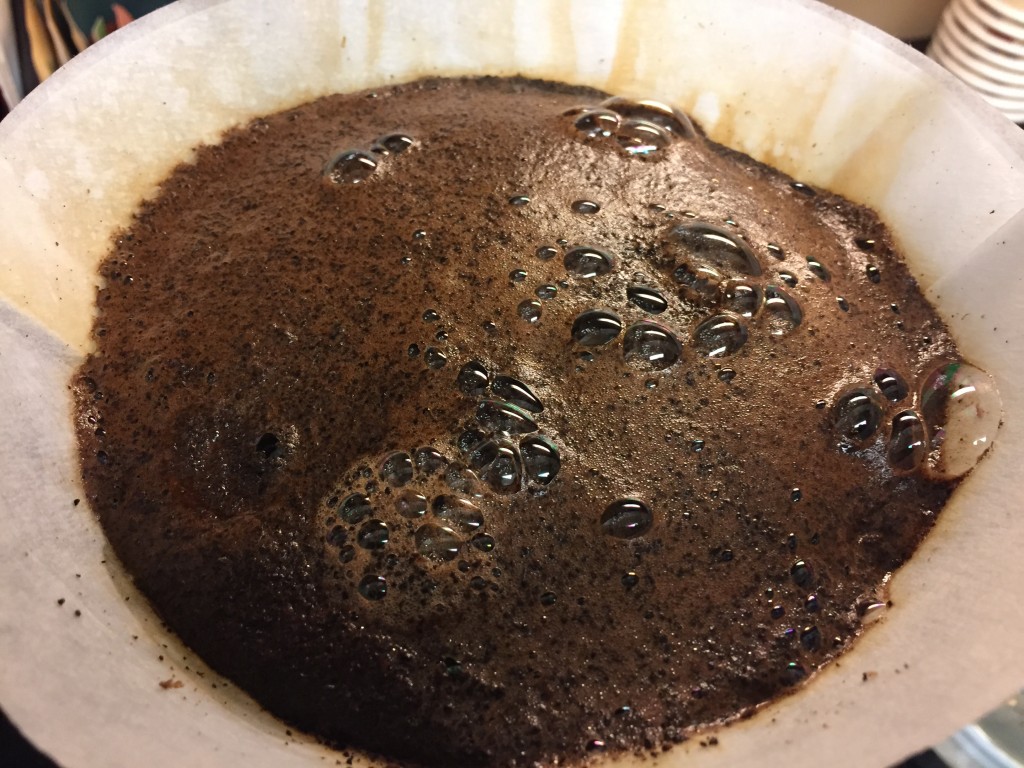
Slowly pouring the first 250 grams of water over the coffee allows the coffee to begin to be extracted.
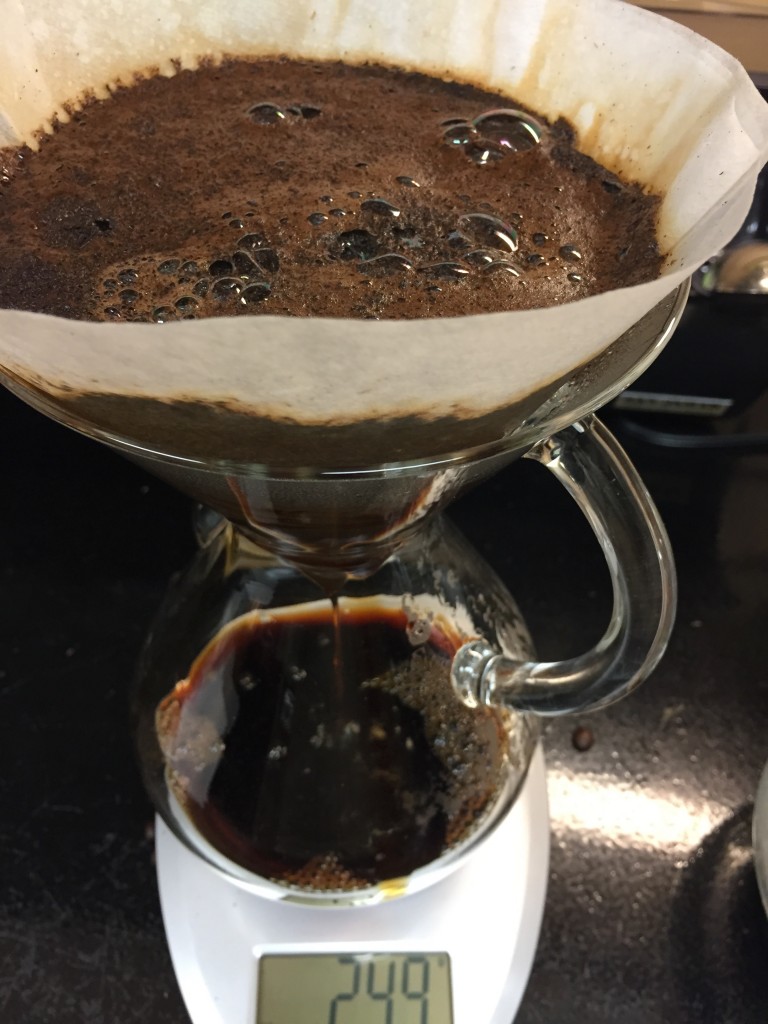
The classic coffee maker has not changed since originally invented in 1941.
Step 3
Then add the remaining water. Mine takes 1000 grams of water. This takes time to brew through and drip – about 5 minutes -but that is ok, great coffee takes time.
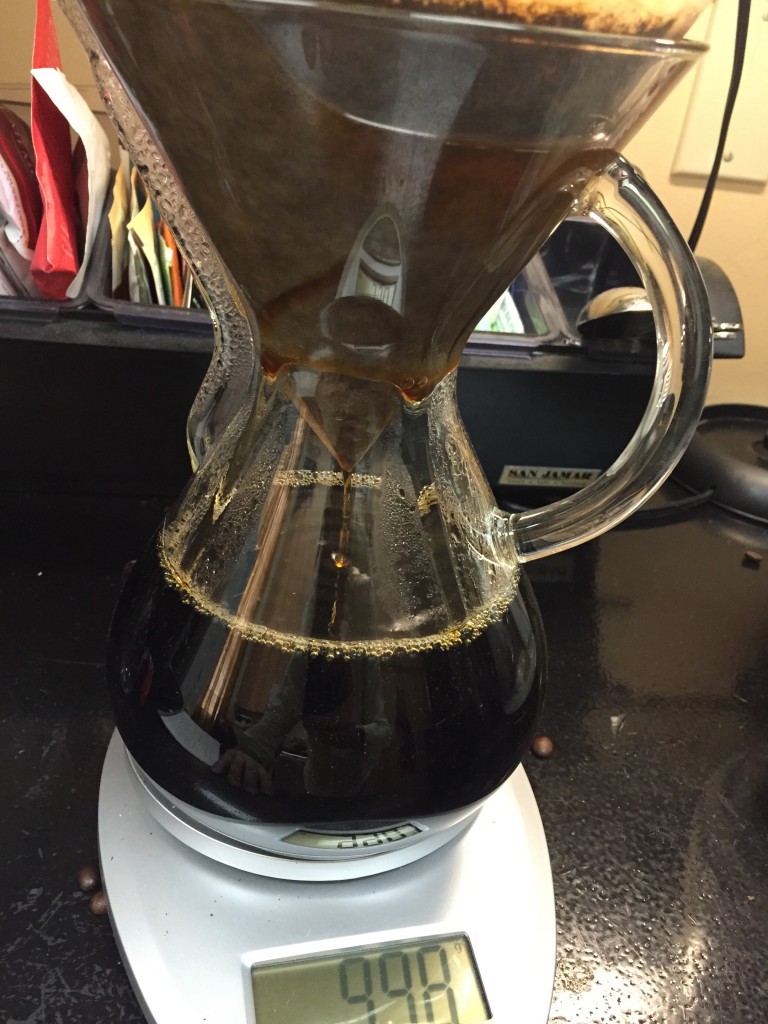
It takes time for the water to percolate through the grounds and slowly drip into the Chemex
Enjoy and Drink:
This is the classic coffee. It takes about 10 minutes to make. The glass of the Chemex allows heat to be retained – so you don’t have to keep heat on the coffee.
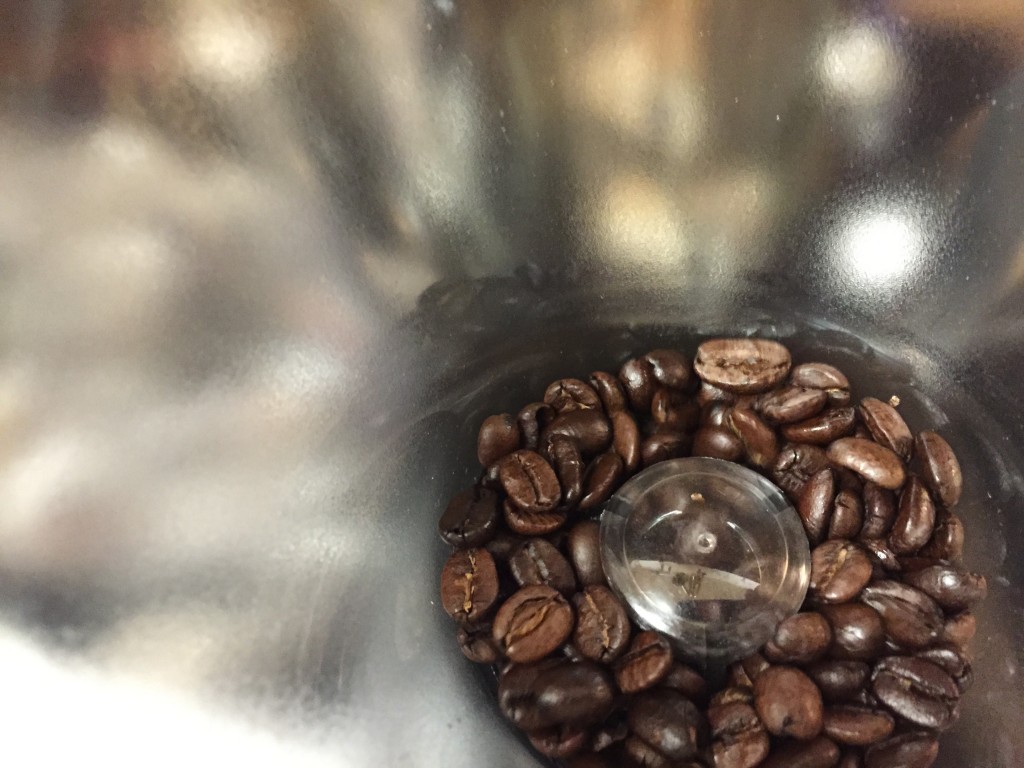
Is there anything better than watching coffee grind. Slowly stripping away the cellulose, one layer at a time. Tempting you as it removes a bit here, revealing an essential oil of coffee there. Sometimes with a bit of violence, sometimes playfully. These are fifty shades of coffee
